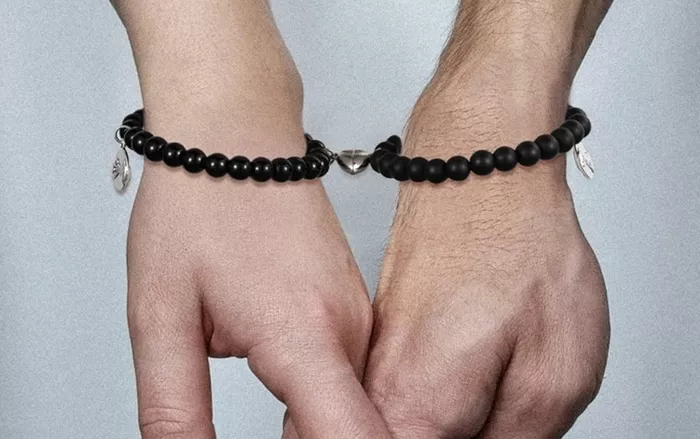In recent years, magnetic bracelets have gained popularity as alternative health accessories purported to provide various benefits, ranging from pain relief to improved energy levels. These bracelets are adorned by individuals seeking natural remedies and non-invasive therapies for a variety of ailments. Despite their widespread use, questions persist regarding their effectiveness and the scientific basis behind their purported benefits.
Understanding Magnetic Therapy
Magnetic therapy, the principle upon which magnetic bracelets are based, involves the use of static magnetic fields to allegedly improve health and alleviate pain. The concept dates back to ancient times when magnets were believed to possess healing properties. Today, proponents claim that wearing magnetic bracelets can rebalance the body’s electromagnetic field and promote overall wellness.
Advocates of magnetic therapy propose that magnets can influence the body at a cellular level, enhancing circulation and oxygenation of tissues. This, they argue, leads to better healing processes and relief from chronic conditions such as arthritis, migraines, and muscle soreness. Moreover, proponents suggest that magnetic fields may interact with the body’s bioenergetic field, supporting balance and vitality.
The Mechanism of Magnetic Bracelets
Magnetic bracelets typically feature small magnets embedded within or attached to the bracelet. These magnets are often made from materials like neodymium, which are known for their strong magnetic properties. According to proponents, when these magnets come into contact with the skin, they create a magnetic field that penetrates the body and exerts therapeutic effects.
The magnets in the bracelet are believed to produce a magnetic field that can penetrate tissues and cells, affecting the flow of ions and electrolytes. This interaction is theorized to improve blood circulation by dilating blood vessels and facilitating the delivery of oxygen and nutrients to tissues. Additionally, proponents suggest that magnetic fields may alter nerve impulses, potentially reducing pain signals and promoting a sense of well-being.
Evaluating the Claims: What Science Says
Despite widespread use and anecdotal evidence supporting the benefits of magnetic bracelets, scientific research on their efficacy remains inconclusive. Several studies have attempted to investigate the therapeutic claims associated with magnetic therapy, but results have been mixed and often contradictory.
A systematic review published in the British Medical Journal (BMJ) examined randomized controlled trials involving magnetic therapy for pain management. The review concluded that there was no significant evidence to support the use of magnetic bracelets for reducing pain in patients with rheumatoid arthritis, osteoarthritis, or fibromyalgia. Similarly, another review published in PLOS ONE found insufficient evidence to recommend magnetic therapy for treating chronic pain.
Critics argue that any perceived benefits of magnetic bracelets may be attributed to a placebo effect rather than the actual magnetic field. Placebo effects occur when individuals experience improvements in their condition simply because they believe the treatment is effective, regardless of whether it has any physiological impact.
Potential Benefits and Alleged Uses
Proponents of magnetic bracelets continue to assert their benefits across a wide range of health conditions. Some of the purported benefits include:
Pain Relief: Magnetic therapy is often marketed as a natural alternative to painkillers for conditions such as arthritis, back pain, and headaches.
Improved Circulation: Advocates claim that magnetic fields can enhance blood flow and oxygenation of tissues, potentially speeding up healing processes.
Enhanced Energy and Vitality: Wearers may report feeling more energetic and balanced when wearing magnetic bracelets regularly.
Reduced Inflammation: Magnetic therapy is suggested to have anti-inflammatory effects, which could benefit conditions like tendonitis and bursitis.
Stress Reduction: Some users believe that magnetic bracelets help alleviate stress and promote relaxation by rebalancing the body’s energy.
It’s important to note that while these benefits are frequently cited in marketing materials and testimonials, they have not been conclusively proven through rigorous scientific research.
Safety Considerations and Precautions
Magnetic bracelets are generally considered safe for most people when used as directed. However, there are certain precautions and considerations to keep in mind:
Interaction with Medical Devices: Individuals with pacemakers, defibrillators, insulin pumps, or other implanted medical devices should avoid magnetic therapy due to potential interference.
Allergic Reactions: Some materials used in magnetic bracelets may cause skin irritation or allergic reactions in sensitive individuals.
Effectiveness: Given the lack of robust scientific evidence, individuals should approach magnetic therapy as a complementary rather than primary treatment option for medical conditions.
Consultation with Healthcare Providers: It’s advisable to consult with a healthcare provider before using magnetic bracelets, especially if you have underlying health conditions or are pregnant.
See Also: What Do Ankle Bracelets Symbolize?
Debunking Myths and Misconceptions
Misinformation about magnetic bracelets abounds, perpetuating myths that may influence consumer perceptions. Some common myths include:
Instant Pain Relief: Magnetic bracelets are often marketed as providing immediate relief from pain. In reality, any perceived benefits may take time to manifest, if at all.
Universal Effectiveness: Not everyone may experience the same benefits from magnetic therapy, as individual responses can vary widely.
Cure-All Solution: Magnetic bracelets are not a cure-all for every ailment and should not replace conventional medical treatments when necessary.
Conclusion
In conclusion, the purpose of magnetic bracelets revolves around their perceived ability to harness magnetic fields for health benefits, particularly in alleviating pain and promoting well-being. While anecdotal evidence and user testimonials abound, scientific research on their effectiveness remains inconclusive and often contradictory.
Consumers interested in magnetic bracelets should approach them with cautious optimism, recognizing that any perceived benefits may be influenced by psychological factors rather than physiological effects. As with any complementary therapy, it’s crucial to consult with healthcare providers and rely on evidence-based treatments for medical conditions.
Ultimately, the decision to use magnetic bracelets should be based on informed choice and personal preference, taking into account the available scientific evidence and individual health considerations. Magnet therapy continues to intrigue researchers and consumers alike, prompting ongoing exploration into its potential benefits and limitations in the realm of alternative medicine.

